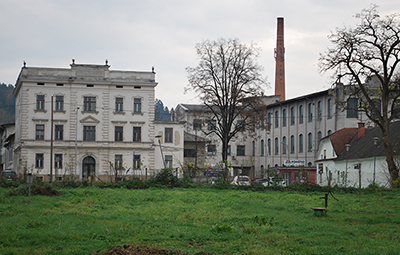
There is no fixed definition of the term “brownfield”. Each state describes and understands it differently.
Our Strategic Partnership »Brownfield sites and Sustainable Development – How a school can affect the local environment« is devoted to the educational purposes and has its roots in Education for Sustainable Development. Through identifying, analysing and solution finding for the brownfield sites in the local community will bring some elements of Education for Sustainable Development into the school curriculum and will promote the idea of sustainable development in the partner schools and their wider communities.
One of the aims of the project is to develop “Guidelines for Dealing with Brownfields in the School”, with identifying, analysing, solution finding, publication as necessary steps in the approach. Through the work on the specific topic the school and the pupils get involved with the shareholders in the field of urban planning, such as municipality, NGO-s, local inhabitants, owners, research institutions, and so collect important experiences in their aspiration for better environment.
We would like to connect sciences, civic education and languages in a sensible way through crosscurricular approach.
Since the Stockholm Declaration of 1972, there is a saying that every man has a right to a clean and healthy environment. But this is not as much a question of technology but the question of active citizenship. With the concept of sustainable development the interlinking of these apparently remote
areas became possible. Respect of human rights, active citizenship and political participation or preserving the nature and entrepreneurship, these aspects found the way into the framework of sustainable development (SD). Although the concepts of SD and Education for SD aren’t new anymore, the recent political and economic shifts in the EU have made it more negligible. The strategy Europe 2020 main goals were shaken by the economic and the refugee crisis. Countries, hit by the economic crisis, have shifted their public debates from environment friendly to environment indifferent in order to save their economies.
We would like to teach our pupils how to be responsible towards oneself, towards the social environment and towards the nature. Therefore, we have chosen a small part of our local communities to tackle: brownfield sites. These are often quite obvious places in our municipalities; the term is used in urban planning to describe land which has been previously used for industrial or commercial use but now not in use, sometimes also contaminated. They are at intersection of industry, commerce, health, environment, community and can reproduce aspects of social inequality and moral hazard.
The project main goal is to promote exchange of experience and know-how between different types of organizations involved: two elementary schools with lower secondary lever, two secondary general education schools and one vocational school from countries, different in approach to the urban planning, from a million-city to a small remote settlement.
Some interesting links:
- On brownfield sites in US https://www.epa.gov/brownfields
- On land use in EU https://www.eea.europa.eu/themes/landuse
- On land recycling and densification in EU https://www.eea.europa.eu/data-and-maps/indicators/land-recycling-and-densification/assessment-1
TEAM
Jón Aðalsteinn Brynjólfsson, Akureyri, Iceland, head coordinator, jonni@akmennt.is
Hedvika Škapová, Prague, Czech Republic, school coordinator, skapova@podskalska.cz
Margit Kirss, Suure-Jaani, Estonia, school coordinator, margitkirss@gmail.com
Marko Majce, Domžale, Slovenia, school coordinator, marko.majce@ssdomzale.si
Anna Maderner, Stenungsund, Sweden, municipality coordinator
Jill Josefsson, Stenungsund, Sweden, municipality coordinator, jill.josefsson@stenungsund.se
Alenka Lenarčič, Domžale, Slovenia, web administrator, alenka.lenarcic@ssdomzale.si
